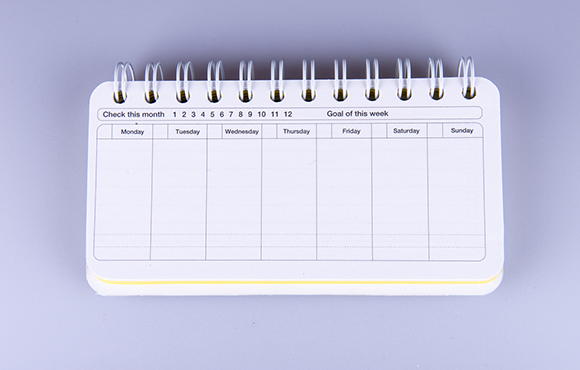It can be a coach and a crystal ball. It can provide a wake-up call and a slap on the wrist.
A training diary is one of the best tools you can use if your goals are to improve. Performance trends and patterns that cannot be seen by observing one day at a time become clear in a diary.
Your resting heart rate for one day does not tell you much, but observing the pattern of rise and fall against the background of a training schedule can red-flag fatiguing workouts and identify the number of days required for proper recovery.
1. Identify What It Takes to Be Really Fast
1 of 11
Following a peak performance, you will have a solid record of every detail it took to get there. What was your body weight when you were really fast? This is a super-useful piece of data. The lightest weight you can achieve is never the weight at which you are the fastest. How long was your taper? What were your final key workouts?
Find:
Your Next Triathlon2. Correct Performance Slumps
2 of 11
During a training slump, look back in your log to identify the culprit—lack of sleep, too many miles, too much intensity, poor nutrition? Once you have made a positive identification you can rectify the mistake and never make it again. A slight downswing in performance data will quickly make you aware your training plan needs tweaking.
Without consistent logging of data, it is easy to overlook a performance downswing until it's huge and glaring and requires significant training plan modifications rather than a little tweak.
Find:
Your Next Triathlon3. Confirm Patterns
3 of 11
By consistently logging fatigue-level data, one of my athletes has discovered that Tuesday of a peak week is always a slump day for her, but by the weekend race she is on fire. Now we have named them "tired Tuesdays."
On tired Tuesdays she can relax and take it easy with the confidence that is it part of her normal peaking process. Prior to tracking this trend it was highly stressful for her to feel blown on Tuesday.
Find:
Your Next Triathlon4. Build Confidence
4 of 11
Tired legs are often the only clear evidence you have logged a quality training session, and these disappear with a few days recovery. During a taper for an "A" race it is easy to forget about all of the hard work and preparation you have done and let doubt that you have done enough training creep into your mind.
A training diary creates a permanent record of accomplishments. Reviewing every weekly goal and training period-objective achieved will back you up before a big race when your confidence is faltering.
Find:
Your Next Triathlon5. Create Motivation
5 of 11
Have a place in your diary to record data from significant performance milestones such as tests, key workouts and races. Tabulating and comparing this data over time can be a significant motivator as you are able to track progress in your performance.
I started a training diary in the early '90s and now get a kick out of seeing what I did on that particular day a decade prior. On occasion, I have gone out and repeated an interval session I did 10 years ago. By having the intervals logged I can race myself. To be as fast as a 10-years-younger version of myself is an awfully good feeling.
Find:
Your Next Triathlon6. Be Accountable
6 of 11
A training diary makes it tougher to blow off training sessions when you know you have to log your actions for the day. Many athletes publish their training logs online to make them even more accountable.
I often coach myself. Having my training log available for my athletes to read keeps me honest and following established training principles.
Find:
Your Next Triathlon7. Give Your Coach What She Needs
7 of 11
If you have a coach, keeping a training diary that is accessible for your coach to read 24/7 is an essential part of effective communication. The more information you can gather and provide your coach, the better job they can do for you. Using an online training journal (such as Active Trainer's) is ideal as both athlete and coach have access to the log.
Heart rate and power-training data can be downloaded and analyzed with sophisticated tools, and yearly data can be summarized with a single click.
Find:
Your Next Triathlon8. Plan to Get Better
8 of 11
Most athletes have a progressive goal to do better next season. At the end of this season, your diary is a written record of what worked and didn't work for you. What type of races or courses did you excel on? How many total annual hours did you train? Your diary is a gold mine of information to use to improve next season's training plan.
Find:
Your Next Triathlon9. Confirm Goals
9 of 11
Your training diary is the ideal place to record and stay grounded with your goals. When training is going well, it is easy to suffer from goal inflation and get distracted from your true goals.
Find:
Your Next Triathlon10. Emotional Outlet
10 of 11
Training and racing can invoke some irrational and intense emotions. Dropping out of your "A" goal race can provide you with days, if not weeks, of second-guessing and angst that you didn't try hard enough.
In reality, beyond yourself and your coach, nobody else cares much if you had a poor race. Family members tire very quickly hearing about it repeatedly. A training diary is an ideal place to vent these emotions. Putting them down on paper often puts them into perspective.
Written training journals are still highly popular. The satisfaction of looking at a row of training journals dating back 10 years or more is immense and somehow gives life and value to the countless hours spent training.
Cross-country skier Luke Bodensteiner published his training journal for the year leading up to the 1994 Winter Olympics under the name Endless Winter. It is a hilarious and sometimes touching chronicle of his training, full of moments every endurance athlete will relate to.






Discuss This Article